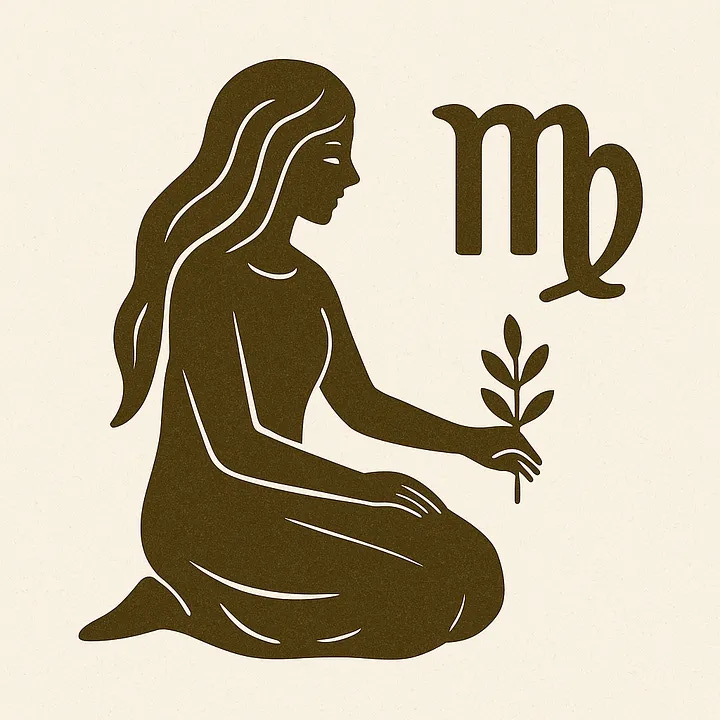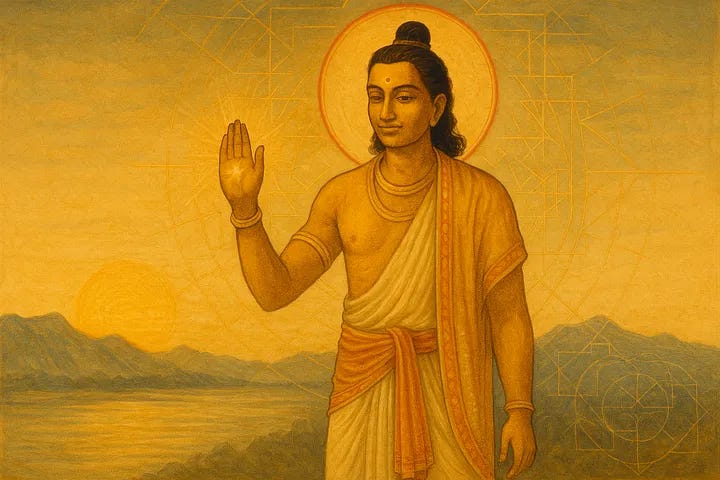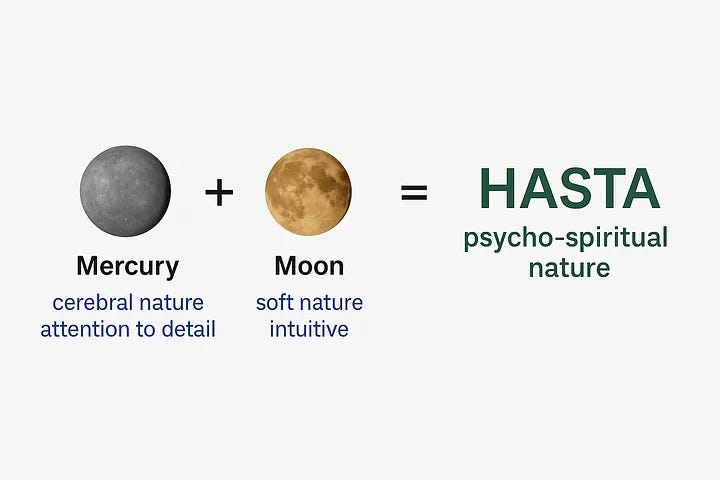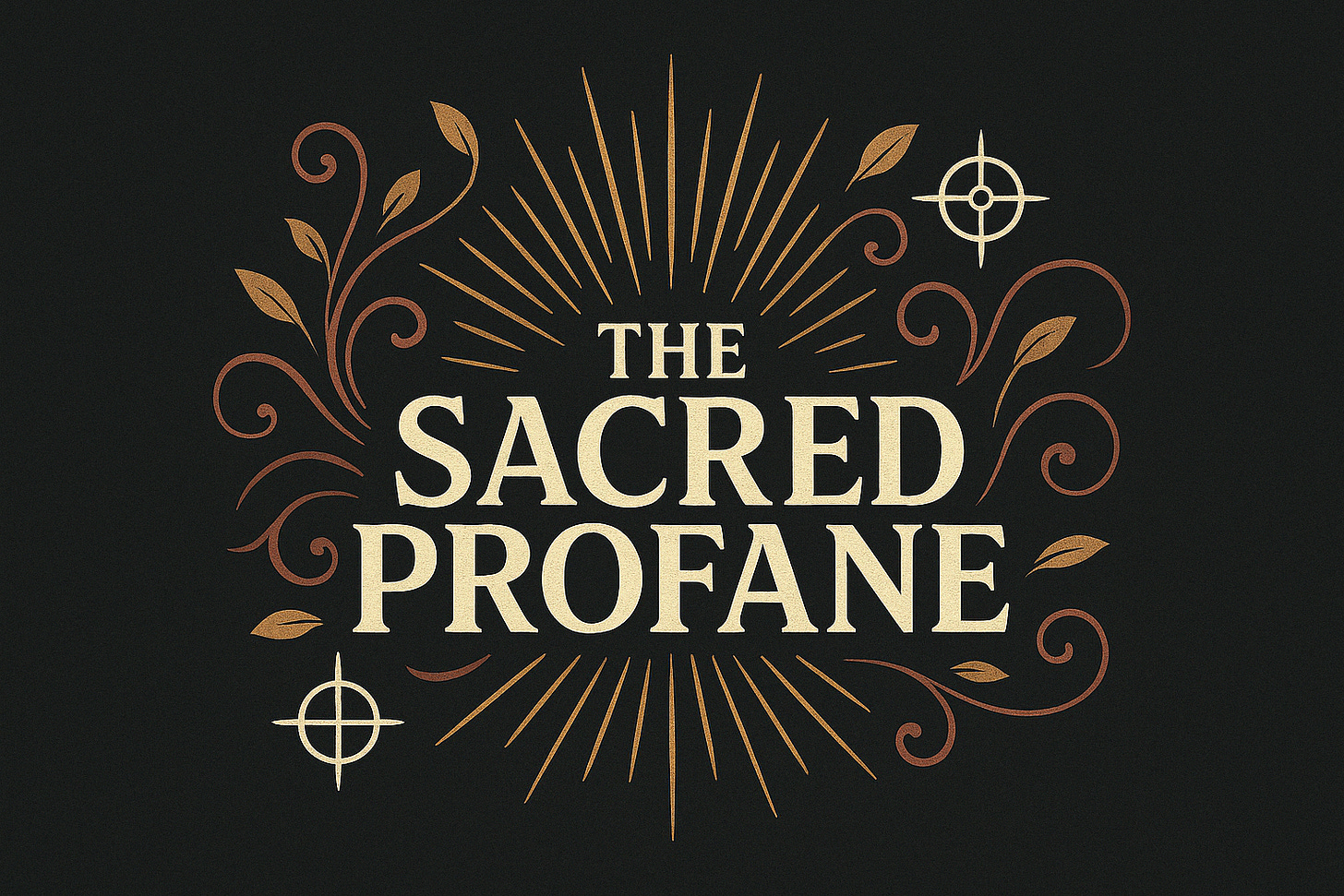Welcome to the 13th Nakshatra, Hasta. One quick reminder: If you haven’t read the first two posts in this series, I recommend you start there before continuing to this Nakshatra.
The Basics
Hasta Nakshatra sits entirely within Virgo, from 10°00’ to 23°20’, which gives it a distinctly focused expression. Unlike nakshatras, which span two signs and carry blended archetypes, Hasta is fully immersed in Virgo’s analytical, earthy intelligence. What this means is — if you were born under Hasta, your expression is likely filtered through Virgo’s lens: discerning, skillful, detail-oriented, and often wired for service.
The Myth
Hasta’s mythic thread is anchored in Savitar, the solar deity invoked at dawn. He’s not the blazing authority of Surya (Sun) at midday, but a more refined current — the golden light just before sunrise, when the world is still soft and permeable. In the Vedas, Savitar is described as the one who sets all movement in motion — subtly, precisely, and without force. He initiates cycles, rituals, and awakenings through inner alignment rather than outer command. His intelligence is rhythmic, knowing exactly when and how to act. In that sense, Savitar isn’t just a deity of beginnings — he’s also a master of timing, nuance, and the delicate architecture behind creation.
Unlike most deities that tend to have glamorous tales of wars, conquests, and glory, Savitar is seen as a god of refinement. His mythology doesn’t unfold through dramatic battles or overt displays of power, but through the quiet rigor of skill, order, and sacred design. He’s described in the Rig Veda as the golden-handed one who creates with precision, blesses through motion, and inspires through light. He’s portrayed as the artisan of the cosmos — the one who builds, heals, and harmonizes, not by force, but through intention made exact — somewhat a creator who designs with delicate attention to detail. For those born under Hasta, this translates into an affinity for subtleties, refined processes, nuances, and the capacity to create gracefully and accurately. It’s less about what they do, and more about how they do it.
Symbolism
The symbol for Hasta is the hand. This isn’t a broad or abstract symbol — it’s specific, tactile, and functional. The hand is how thought becomes form. It’s what allows us to build, write, heal, hold, or release. In the context of Hasta, this speaks to an innate drive to engage with the world through skillful action — not necessarily loud or dramatic, but precise, refined, and often understated. There’s a quiet confidence in those who carry Hasta’s imprint in their charts; they often work behind the scenes, but what they do holds weight because it’s crafted with care and precision.
This symbolism also highlights an embodied intelligence — a way of knowing that’s less cerebral and more intuitive. The hand knows what to do even before the mind finishes thinking it through. Whether it shows up in technical skill, physical coordination, or a refined aesthetic sense, Hasta leans toward people who are naturally skilled at handling complexity with ease. There’s a kind of intuitive choreography here — where timing, control, and finesse matter as much as the outcome.
Rulerships
Now that we’ve explored the myth and symbolism of Hasta, let’s look at how its rulerships shape its expression.
Zodiac Rulership — Hasta falls entirely within Virgo, placing it under Mercury’s domain. This lends it a foundation of mental clarity, precision, and a natural orientation toward observation and thoughtful engagement.
Nakshatra Rulership — The Moon, ruler of Hasta itself, brings in emotional responsiveness, intuition, and an ability to attune to subtle rhythms — whether in people, environments, or social dynamics.
Together, Mercury and the Moon create a blend of sharp intellect and gentle perception. There’s both structure and softness, a balance of analysis and empathy. People with strong Hasta influence often move through life with quiet attentiveness — noticing details others miss and adjusting with fluid intelligence, grounded in both head and heart.
Putting It All Together
From what we’ve explored so far, Hasta carries a few distinct signatures that define its energy:
Ruled by Savitar: Embodies timing, precision, and a refined approach to creation.
Symbolized by the Hand: Speaks to skillful action, craftsmanship, and the ability to translate thought into form.
Entirely in Virgo: Grounds the nakshatra in discernment, analysis, and an appreciation for order.
Ruled by the Moon: Adds emotional attunement, intuition, awareness of patterns, and responsiveness to nuance.
What does it look like if the Moon is in Hasta?

If your Moon is placed in Hasta, you likely approach life with a balance of clarity and care. You tend to notice what others overlook — not just in details, but in people’s tone, body language, and unspoken needs. There’s often a quiet competence about you: the ability to make things work smoothly behind the scenes, to respond quickly in changing situations, and to bring form to what was once vague or abstract. At your best, you move through the world with graceful precision — equal parts thoughtful and intuitive. The key is learning to trust your timing and not over-edit yourself; your strength lies in your ability to act with both head and heart.
A Quick Example

This chart has a Scorpio Ascendant with the Moon placed in Virgo in the 11th house, in Hasta Nakshatra. The following key observations can be made about this chart:
The Moon in Virgo suggests a mind that is analytical, detail-oriented, and emotionally attuned to order and structure. Being in the 11th house, this person is likely to find emotional fulfillment through social networks, community-based work, and intellectual collaborations.
The Moon’s placement in Hasta Nakshatra adds a distinct flavor: there is a refined, skillful, and hands-on approach to life. This is someone who processes emotion through action — particularly through precise, intentional work. Hasta brings in the ability to manifest through methodical effort, often with a quiet sense of mastery.
The Moon’s conjunction with Saturn and Jupiter in Virgo amplifies this meticulous nature. Saturn brings discipline and a deep sense of responsibility, while Jupiter may suggest an inward-looking philosophical or ethical nature — possibly someone who questions systems or seeks deeper truth in practical matters.
The influence of Hasta suggests this is someone who is emotionally grounded when they are in control of their process. They likely thrive when they have the space to focus, refine, and bring form to their vision — whether in art, writing, healing, or organizational roles.
Jupiter, as the ruler of the 5th house of creativity, and Saturn, ruling the 3rd house of communication, are both closely conjunct the Moon in the 11th house in Hasta. This alignment suggests a natural fluency in translating abstract or intuitive ideas into structured, creative expression. There’s a refined intelligence here — someone who may channel philosophical insight or emotional depth into communicative forms such as writing, music, or design. Their talents likely emerge through a patient, methodical process rather than sudden bursts, reflecting the earthy precision of Virgo and the craft-driven nature of Hasta.
Conclusion
Hasta reflects the Moon’s quiet intelligence and Virgo’s refined craftsmanship — highlighting intuition, precision, and the art of thoughtful action. If your Moon is in Hasta (or in a prominent placement in your chart), you may feel drawn to create order from complexity, offer support behind the scenes, and express care through skill and presence.
Things you can embrace: Attentiveness, adaptability, and the gift of translating insight into tangible impact.
Things you must be wary of: Over-editing, perfectionism, or retreating into over-analysis when emotions feel unclear or unspoken.
As always, let astrology serve as a tool to illuminate your gifts and tendencies — not as a box to fit into, but as a mirror to grow through.
Resources
The Nakshatras: The Stars Beyond the Zodiac by Komilla Sutton
The Nakshatras by Dennis Harness
The Essentials of Vedic Astrology by Komilla Sutton
Nakshatra — The Authentic Heart of Vedic Astrology by Vic DiCara
27 Stars, 27 Gods: The Astrological Mythology of Ancient India by Vic DiCara
Vedic Astrology Simply Put by William R. Levacy










